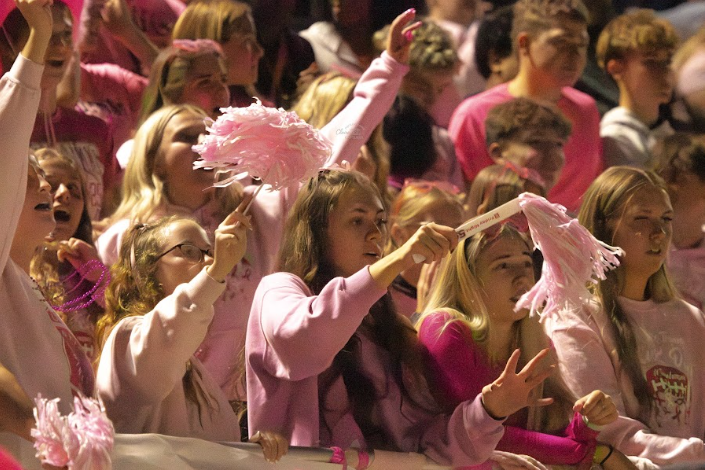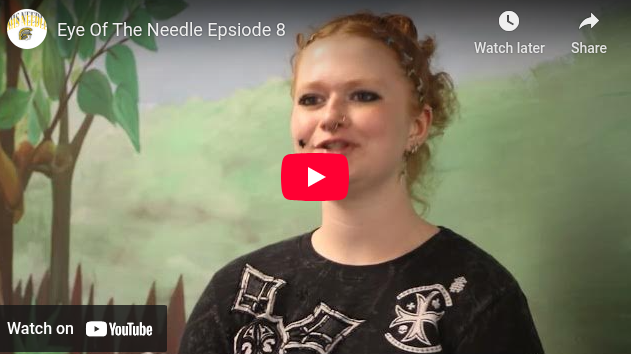Nothing but Good Vibes from National School Lunch Week
Cafeteria workers embraced happiness for last week’s celebration.
Junior Brock Henderson and friends are eating the provided school lunch.
October 17, 2022
For many students across the country, school isn’t the same without a chance to make mealtime memories. National School Lunch Week is a holiday celebrated on the second week of October and is used as a “time to recognize the critical nutrition that school meals provide to tens of millions of children every school day,” according to usda.gov.
Instead of millions of children, Atlantic High School’s lunch staff of only six provides meals to over 300 students each day. “I come to work at 7:30 a.m., [it] takes me until 11:30 a.m. because I also do salad bar,” said Laura Namanny, one of the lunch ladies at AHS, on preparing lunches. For her, National School Lunch Week is a time to have fun. The theme this year is “Peace, Love & School Lunch,” in which the students and staff were encouraged to embrace a “hippie theme.” They’re not the only ones that enjoyed the good vibes; “I think their positivity is amazing,” said study hall advisor Misty Rhodes. For her, National School Lunch Week is an “opportunity for students and staff to acknowledge the amazing food staff we see every day.”
Rhodes has encouraged her students to make posters showing their gratitude for the custodians and lunch ladies of AHS, who she thinks don’t get enough appreciation. “People won’t even acknowledge them saying good morning, and that breaks my heart.” She isn’t the only one who feels this way: junior Kipp Namanny feels that for some students, showing gratitude is more of a chore than a genuine expression. Despite his own love of food, he feels that other people not only take food for granted but the work that goes in behind each plate. “Some people fill up their lunch trays and chat. I get it’s a social hour but I’m sure you can multitask,” he said.
Not only does K. Namanny see the competitive attitude of the lunch line first-hand as a student — the roughly 25-minute space to eat becomes an unfair race to see whose time is slimmed down the least — but as the son of a cafeteria worker, he shares L. Namanny’s perspective on topics regarding the lunch room. “When it comes to food [waste] there is almost nothing you can do. It’s kind of like a sad reality of it. There’s not much you can change about the menu. Raising awareness isn’t gonna do much either, I’m sure not everyone will listen. You can’t force them to eat food… You can provide an incentive, but at that point why bother?”
Rhodes shared a similar outlook on food waste, especially regarding the previous school year, when every student was provided a free school lunch. “There’s a lot of kids that would love to have a meal every day. It hurts when I see a full sandwich or full serving of stuff get tossed.”
Despite agreeing that food is often taken for granted and wasted, L. Namanny wouldn’t trade her job for anything else. “I love being out on the computer and getting to talk with [students]; every day something funny happens.” There’s an opportunity for every individual to make mealtime memories with the people in their lives.
K. Namanny, for example, can distinctly remember growing up with colorful scrambled eggs for Easter, while Rhodes can easily reminisce about her mother’s Christmas lasagna recipe that she inherited. For these people, food isn’t just about survival, but also about the success and experiences it provides for both school and life. All of this isn’t possible without school lunch and the wonderful workers behind every hot meal.
In the words of K. Namanny, “It’s such a monumental task to have to feed an entire school. You also have to deal with the school staff. Thank you for all you do.”









